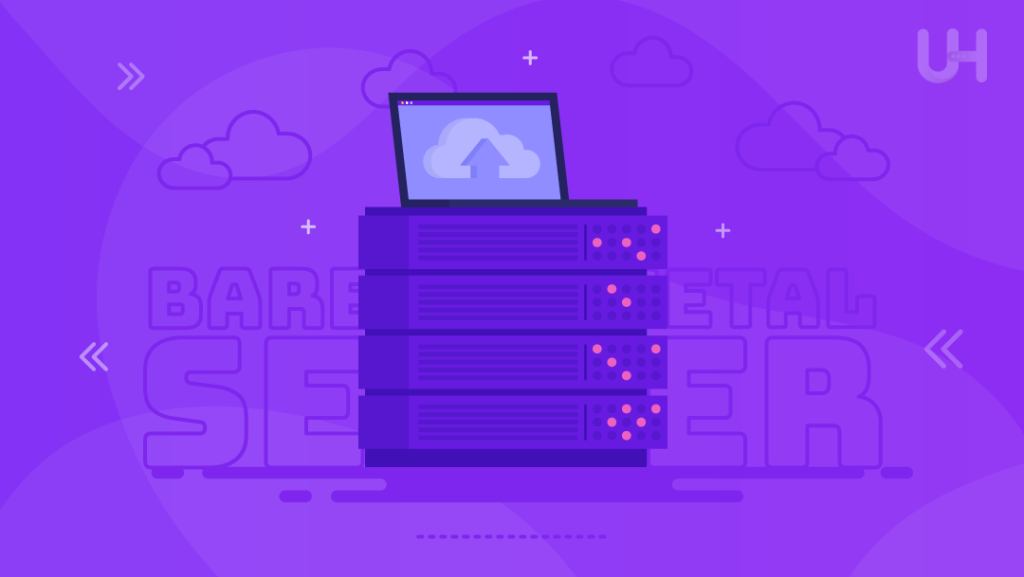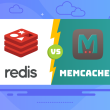Bare metal provisioning is at the core of the IT infrastructure and hosting world, providing powerful resources dedicated to enterprise needs. With high performance, flexibility, and reliability driving business demands, understanding how to provision bare metal servers is critical for making informed decisions about your hosting environment.
In this guide, we will define bare metal provisioning, describe its process and benefits, explore various use cases, and discuss why it remains popular in today’s digital ecosystem.
Key Takeaways
- What it is: Bare metal provisioning is the process of setting up physical servers without a virtualization layer, giving you direct access to the hardware.
- Superior Performance: It offers superior performance by eliminating the overhead caused by a virtualization layer.
- Enhanced Security: Bare metal minimizes risks associated with shared environments, making it ideal for stringent compliance requirements.
- High Customizability: Users have complete control, from selecting the OS to configuring hardware specifications.
- Reliable Scalability: Businesses can add additional bare metal servers to the infrastructure to quickly meet increasing demand.
- Higher Cost: There is a higher upfront investment compared to virtualized solutions.
- Complexity: It requires skilled IT staff to manage the hardware and provisioning process.
- Use Cases: It is best for high-performance computing, online gaming servers, and mission-critical databases.
What is Bare Metal Provisioning?
Bare metal provisioning refers to the process of configuring and deploying physical servers (bare metal servers) without a virtualization layer. Unlike cloud-based or virtualized environments, bare metal servers provide direct access to the hardware, enabling unparalleled performance and control.
It’s like setting up a computer from scratch, where the entire system, including the operating system, software, and configuration, is installed directly onto physical hardware.
How Does Bare Metal Provisioning Work?
Bare metal deployment is a systematic process that involves several essential steps to ensure optimal performance of physical server hardware.
Hardware Setup
The initial phase focuses on preparing the physical server, which includes confirming network connectivity and ensuring that the hardware is compatible with the intended applications.
Operating System Installation
Next, an operating system is installed directly onto the server’s hardware. This can be accomplished through provisioning tools or through manual installation processes.
Configuration Management
Once the OS is in place, various software components, drivers, and security protocols against malware attacks are configured according to the specific requirements of the server’s designated role.
Integration
The final step involves integrating the newly deployed server into the broader IT environment. This integration facilitates monitoring and data exchange and enhances scalability within the network.
Provisioning tools such as PXE (Preboot Execution Environment) and automation platforms like Ansible and Terraform help streamline these processes. These tools significantly simplify and enhance the efficiency of bare metal deployment.
Advantages of Bare Metal Provisioning
- Superior Performance: With direct access to hardware resources, bare metal server provisioning eliminates the overhead caused by virtualization layers. This leads to high-speed performance, making it ideal for resource-intensive applications.
- Customizability: Bare metal servers can be customized to suit specific workloads. Users have complete control, from selecting the OS to configuring hardware specifications.
- Enhanced Security: Since these servers are dedicated to a single data center, they minimize risks associated with shared environments, making them ideal for businesses with stringent compliance requirements.
- Reliable Scalability: As businesses grow, adding additional bare metal servers to the infrastructure can quickly meet increasing demand without performance bottlenecks.
Unlock the full potential With Bare Metal Servers!
Unlock the full potential of your online presence with dedicated hosting from UltaHost. Our hosting ensures optimal performance and reliability, perfect for managing resource-intensive websites, apps, or data-driven solutions.
Use Cases for Bare Metal Deployment
High-Performance Computing (HPC)
Applications such as artificial intelligence training, big data analytics, and scientific simulations greatly benefit from the substantial computing power provided by bare metal servers. These servers offer the performance necessary to handle complex calculations and large data sets effectively.
Gaming Servers
Online multiplayer gaming environments demand low latency and high throughput. Bare metal servers are particularly well-suited for gaming servers, ensuring seamless gameplay and minimal player disruptions.
Database Hosting
Bare metal servers deliver exceptional speed and efficiency for mission-critical databases that require high input/output (I/O) performance. This makes them ideal for businesses that rely on quick and fast VPS for data processing and access.
Hosting Solutions
Organizations seeking scalable, secure, and private VM hosting environments frequently turn to bare metal servers. These servers provide the flexibility and performance needed to support diverse business applications.
Steps to Implement Bare Metal Provisioning
Setting up a server environment requires careful planning and execution. Here are some essential steps to consider
- Assess Your Needs: Begin by evaluating your workload requirements. This assessment involves identifying the necessary CPU capacity, memory, and storage to adequately support your applications.
- Choose the Right Server: With a clear understanding of your requirements, select hardware that aligns with your performance and scalability goals. The choice of server hardware is crucial, as it will influence your server’s ability to accommodate future growth.
- Select a Reliable Hosting Provider: It’s essential to choose a hosting provider that offers customizable bare metal solutions. This level of flexibility allows you to tailor the server configuration specifically to your needs.
- Use Automation Tools: Incorporating automation tools like Chef or Puppet can significantly streamline the provisioning process. These tools facilitate more efficient server deployment and management.
- Test and Monitor: After setting up your server, conduct thorough testing tools to ensure it operates as expected. Additionally, implementing monitoring solutions helps maintain the server effectively and can alert you to potential issues before they escalate.
Following these steps, you can establish a robust and efficient server environment tailored to your specific requirements.
Challenges in Bare Metal Provisioning
While highly advantageous, bare metal deployment comes with challenges, including:
- Cost: Higher upfront investment compared to virtualized solutions.
- Complexity: Requires skilled IT staff to manage hardware and provisioning.
- Scalability: Adding servers can take longer compared to spinning up virtual machines.
Bare Metal Provisioning Tools

Modern tools have dramatically transformed the landscape of provisioning bare metal servers, making the process faster and more efficient. Key components of this advancement include:
MAAS (Metal as a Service)
MAAS is a powerful tool designed to automate the deployment of physical servers in data centers. It simplifies the entire provisioning process by allowing administrators to manage pools of machines as if they were cloud instances. This approach enables rapid deployment and scaling of physical resources, accommodating varying workloads without manual intervention. MAAS also provides a user-friendly interface for tracking server status and managing configurations, making it easier for teams to respond to changing demands.
Redfish API
The Redfish API is an open industry standard designed for managing and using hardware in a data center, specifically servers. Providing a RESTful interface allows for robust hardware management, simplifying tasks such as power control, inventory management, and configuration updates. This standardization enables seamless integration with various hardware and software solutions, allowing IT teams to automate processes and manage server resources more efficiently. The Redfish API enhances compatibility and makes it easier to implement modern management tools in heterogeneous environments.
PXE Boot
Preboot Execution Environment (PXE) boot is a network-based booting process that allows servers to load an operating system directly from a network interface. This technology streamlines the installation of operating systems, as it removes the necessity for physical media, such as DVDs or USB drives. With PXE, administrators can configure multiple servers simultaneously, ensuring consistent deployments across large environments. By utilizing PXE boot, IT teams can reduce setup time and minimize equipment handling, which is particularly beneficial in data centers where efficiency is crucial.
When utilized together, these tools significantly enhance the efficiency, scalability, and overall server infrastructure management in data centers. The combination of MAAS for provisioning, Redfish API for hardware management, and PXE boot for operating system installations creates a more agile and responsive server management ecosystem catering to the dynamic needs of modern IT operations.
Why Choose Bare Metal Servers?
For businesses that value performance, security, and reliability, bare metal servers continue to be the superior choice. These dedicated physical servers offer unparalleled resources and capabilities, making them ideal for various demanding applications. Whether you are managing large databases that require rapid access and processing, running complex AI workloads that depend on high computational power, or hosting high-traffic websites that demand consistent uptime, bare metal servers deliver exceptional performance without the overhead of virtualization. With their direct access to the hardware, businesses can fully optimize their workloads, enhance data security, and achieve the robust reliability necessary to support critical operations.
Conclusion
Understanding bare metal provisioning is essential for businesses seeking high-performance, secure, and reliable hosting environments. While the process may seem complex, the benefits of deploying bare metal servers far outweigh the challenges.
You can power your high-performance website or application with Highly Managed Dedicated Servers from UltaHost. Enjoy unmatched reliability, scalability, and speed, ensuring your platform stays responsive and secure for seamless user experiences. Perfect for businesses prioritizing ultimate control and performance
FAQ
What is bare metal provisioning?
Bare metal provisioning is setting up physical servers without virtualization, directly configuring hardware and software for optimal performance.
How is bare metal deployment different from cloud hosting?
Bare metal deployment uses dedicated hardware, while cloud hosting often relies on shared resources with virtualization layers.
What are the best tools for bare metal provisioning?
Tools like PXE Boot, Ansible, and MAAS are popular for automating provisioning tasks.
Why choose bare metal servers for hosting?
They offer unparalleled performance, security, and control, making them ideal for resource-intensive workloads.
Can bare metal provisioning be automated?
Yes, the process can be streamlined with tools like Chef, Puppet, and Terraform.
What is the cost of bare metal hosting?
Costs vary based on hardware and provider, but managed options offer cost-effective solutions.
Is bare metal suitable for small businesses?
While more suited for enterprises, small businesses with specific needs can benefit from managed bare metal hosting solutions.










